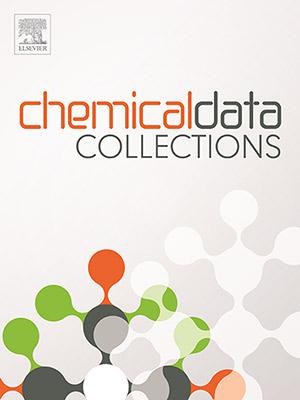治疗糖尿病的有效α-葡萄糖苷酶和α-淀粉酶抑制剂:含噻唑类磺胺衍生物的合成、体外和硅内研究
IF 2.7
Q2 Chemistry
引用次数: 0
摘要
合成了一系列新的含噻唑类苯磺酰胺衍生物(1-14),并测定了其对α-葡萄糖苷酶和α-淀粉酶的体外抑制活性。与标准药物阿卡波糖相比,所有化合物均表现出显著的抑制潜力(IC50分别为38.45±0.80和11.12±0.15µM)。化合物7(3,4-二氯苯基衍生物)显示出有效的α-葡萄糖苷酶抑制作用(IC₅₀= 11.80±0.60µM),而化合物1(2-甲氧基衍生物)是最有效的α-淀粉酶抑制剂(IC₅₀= 5.30±0.20µM)。构效关系分析表明,氯基和硝基取代基作为吸电子基团,在芳香环上的特定位置具有较强的抑制作用。分子对接研究证实了这些发现,表明与关键活性位点残基通过氢键和π-π堆叠进行强相互作用。这些结果突出了噻唑-磺胺杂交体作为开发有效的α-葡萄糖苷酶/α-淀粉酶双重抑制剂治疗糖尿病的潜力。本文章由计算机程序翻译,如有差异,请以英文原文为准。
Potent α-glucosidase and α-amylase inhibitors for the treatment of diabetes mellitus: synthesis, in vitro and in silico studies of thiazole bearing sulfonamide derivatives
A new series of thiazole-bearing benzenesulfonamide derivatives (1–14) were synthesized and evaluated for in vitro inhibitory activity against α-glucosidase and α-amylase enzymes. All compounds displayed significant inhibitory potential as compared to the standard drug, acarbose (IC50 = 38.45 ± 0.80 and 11.12 ± 0.15 µM, respectively). Compound 7 (3,4-dichlorophenyl derivative) showed the potent α-glucosidase inhibition (IC₅₀ = 11.80 ± 0.60 µM), while compound 1 (2-methoxy derivative) was the most potent α-amylase inhibitor (IC₅₀ = 5.30 ± 0.20 µM). Structure–activity relationship analyses revealed that chloro and nitro substituents, which are electron-withdrawing groups, enhanced inhibitory efficacy, particularly when positioned at specific locations on the aromatic ring. Molecular docking studies confirmed these findings, demonstrating strong interactions with key active site residues through hydrogen bonding and π-π stacking. These results highlight the potential of thiazole-sulfonamide hybrids as a promising lead for the development of effective dual α-glucosidase/α-amylase inhibitors for the treatment of diabetes mellitus.
求助全文
通过发布文献求助,成功后即可免费获取论文全文。
去求助
来源期刊

Chemical Data Collections
Chemistry-Chemistry (all)
CiteScore
6.10
自引率
0.00%
发文量
169
审稿时长
24 days
期刊介绍:
Chemical Data Collections (CDC) provides a publication outlet for the increasing need to make research material and data easy to share and re-use. Publication of research data with CDC will allow scientists to: -Make their data easy to find and access -Benefit from the fast publication process -Contribute to proper data citation and attribution -Publish their intermediate and null/negative results -Receive recognition for the work that does not fit traditional article format. The research data will be published as ''data articles'' that support fast and easy submission and quick peer-review processes. Data articles introduced by CDC are short self-contained publications about research materials and data. They must provide the scientific context of the described work and contain the following elements: a title, list of authors (plus affiliations), abstract, keywords, graphical abstract, metadata table, main text and at least three references. The journal welcomes submissions focusing on (but not limited to) the following categories of research output: spectral data, syntheses, crystallographic data, computational simulations, molecular dynamics and models, physicochemical data, etc.
 求助内容:
求助内容: 应助结果提醒方式:
应助结果提醒方式:


